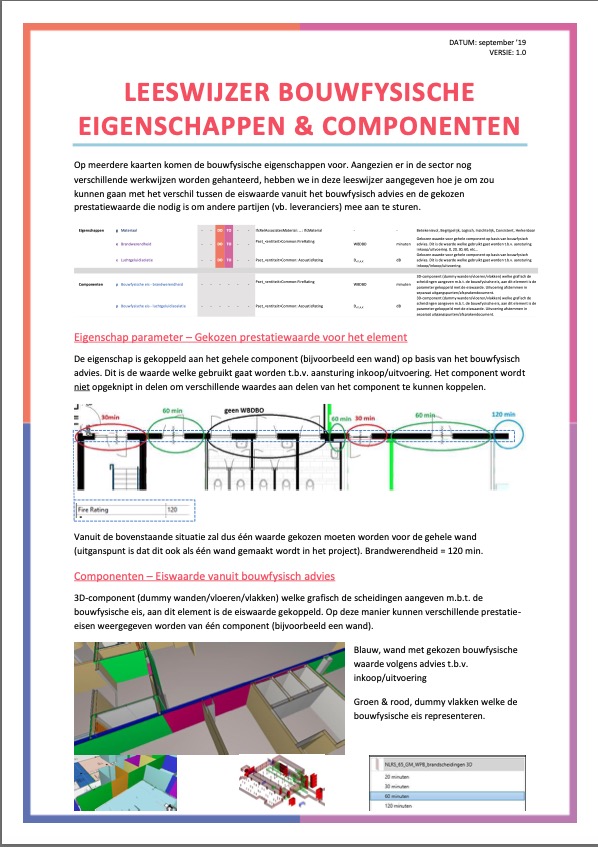Building physics properties
Building physics
Building physics is an important part of the overall design. The incorporation of the building physics advice in the aspect models ensures that the information is easier to find and therefore more useable for the rest of the chain.
Physical properties
Building physics is the 'physics of the built environment': the physical aspects of the built environment, of building structures and installations. These physical aspects are light, heat, air, moisture and sound. For these aspects, buildingSMART has defined Properties that should be used for this purpose.
Example
For example, the assignment of properties can look like this:
- AcousticRating (soundproofing)
- ThermalTransmittance (U-value)
- SolarHeatGainTransmittance (SGGC value)
- Translucency (light transmission)
TIP: Guide to Building Physics Requirements
Building physics requirements can differ within one element. Consider a wall that is partly inside and partly outside. The requirement for the Rc value is different within this wall. This element has a performance requirement for the Rc value, but also an actual U-value, from each component in this wall that must add up to at least the required U-value. Both values cannot occur simultaneously in one aspect model, but they do occur in the combination of aspect models. The guide to Building Physics Requirements in Figure 4.6.1 provides guidance on how to deal with this.
[Note: contents (+ graphics) not yet completed for BBI2! Follow link in image for original document, input to come from BIM-team]

Figure 4.6.1 Guide to Building Physics Requirements